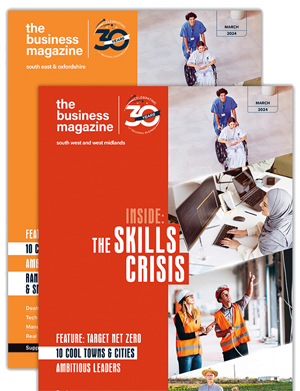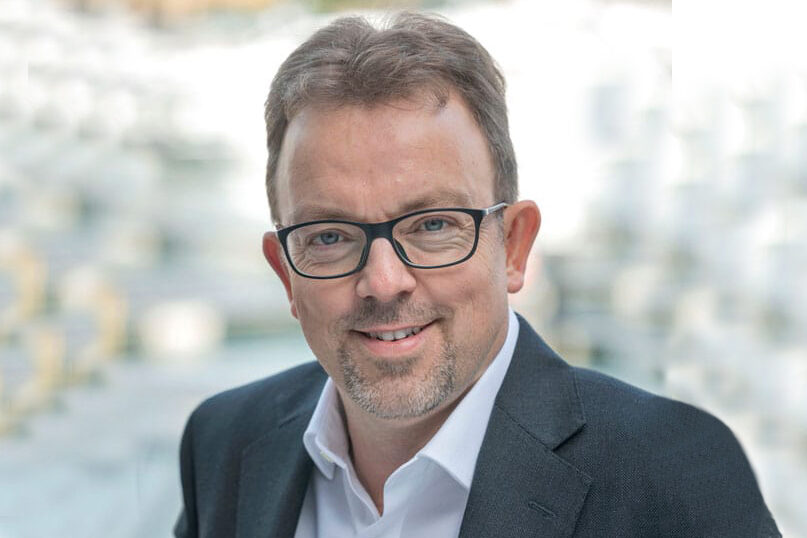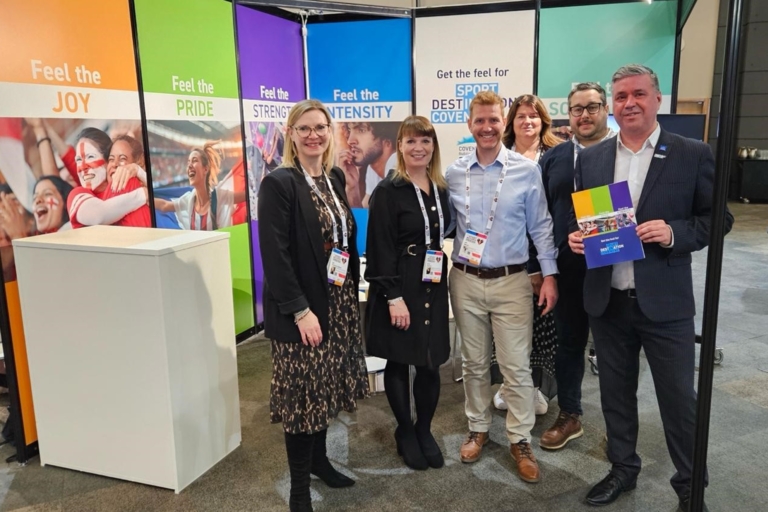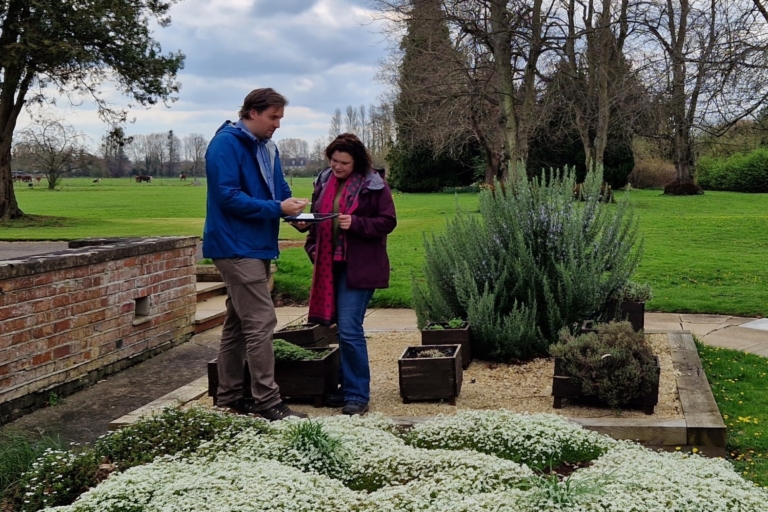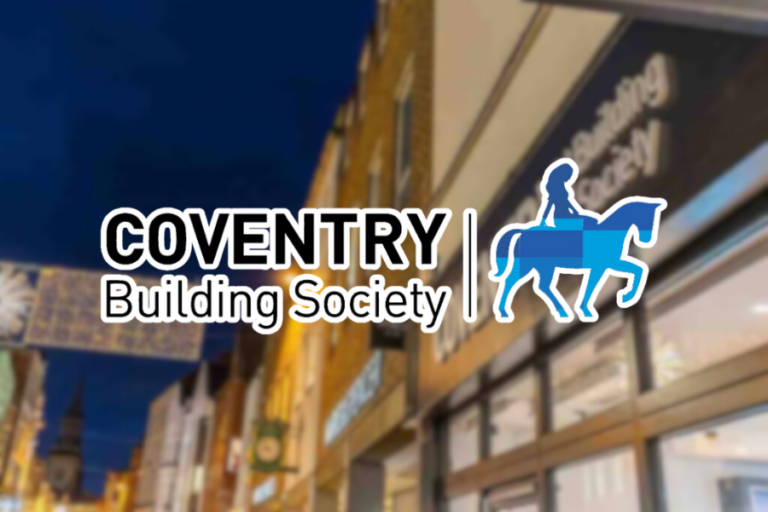Diversity is a worldwide fact; inclusion is a human act

The Business Magazine and Solent 250 sponsors HSBC, KPMG, and Irwin Mitchell invited senior business leaders to the Hotel TerraVina in the New Forest for this discussion
Journalist John Burbedge reports the roundtable highlights
The objective
Respect and appreciation of different ethnicity, gender, age, nationality, disability, sexual orientation, education and religion.
“I prefer the word ‘inclusion’ to ‘diversity’; D&I is about having an open mind and sharing ideas,” said David Clayden.
“Diversity is inevitable today, but we have to choose consciously to be inclusive in the workplace,” noted Paula Claisse.
Past and present progress
When Nick Buckingham started his 30-year career in the UK construction sector it was “a white male-dominated, macho and aggressive culture.” After working overseas and in various sectors he has now returned to construction. “It still has some of that culture, but things are getting massively better, albeit with an inordinate way to go.” Colt International is currently updating its D&I policies and sharing best practice within the industry.
Kelly Hector, from the housebuilding sector, revealed that 60% of Churchill Retirement Living’s workforce today is female. “Diversity comes in many forms and there is still a lot of D&I work to be done. I am passionate about workplace D&I, and learning how others embrace and improve it.”
Hannah Clipston highlighted a seeming complacency in her legal sector where diversity is now evident within junior levels, but not so apparent at higher and leadership levels.
As a former director of Southampton’s Rose Road Association, Neil Wilson is keen to resolve situations where personal disabilities are still seen as barriers to meaningful employment. “There are many obstacles and difficulties that families and individuals already have to overcome. Things are changing in the business world, but that needs to carry on.”
Current D&I awareness and engagement
Recruitment specialist Clayden pointed out that D&I engagement was still an issue in some industries.
Having worked within “bastions of non-inclusiveness”, Adrian Went, admitted he had been relatively unsuccessful in introducing D&I into such sectors. He mentioned professionals so entrenched they didn’t recognise their bigotry or discrimination. Based on experience and pragmatism, he questioned “... how much a society will break in reality, in order to achieve greater diversity in its organisations?”
Companies often like to promote their D&I policies when recruiting, said Clayden. “But some go about it the wrong way, treating them like an ISO scenario – ‘We’ve got that policy, that accreditation’ – and then they just carry on as normal.”
HSBC has well communicated D&I policies and guidelines, noted Andy Farmer, but any policies within modern workplaces and workstyles still require people to implement them correctly. Staff engagement was essential.
The advantages of D&I
Claisse: “There is evidence now that businesses embedding D&I are 15% more profitable than those that don’t.”
Went highlighted how mixed workforces perform better. “We put some young well-qualifed female apprentice welders among some long-serving men, expert welders but less qualified. Suddenly, performance standards went through the ceiling because neither wanted to be shown up.”
Hector: “The world is a diverse place, so those teams, like sales, who interact with external customers, it’s vital that they can relate in order to gain buy in.”
Clayden: “It helps aap3 to have a diverse workforce as we operate worldwide.” With female employees predominant in his sector, flexible hours and part-time working were also important inclusive elements for returning mothers.
Buckingham: “The world is becoming a smaller place, and we have to reflect that. There is so much to gain from employing a broader base of people, it has a rich potential for employers.”
Went suggested D&I could assist with recruitment. In gaining female workshop apprenticeships, Griffon Hoverwork had successfully attracted others, but there was still a shortage of women at engineering design and management levels.
Claisse admitted she had joined KPMG because of its culture. “KPMG challenges itself to be a thought-leader on D&I and I’m very proud that we were the first UK business to publish our workforce socio-economic data and 2018 targets.”
Leadership: embracing and embedding D&I
Farmer: “As long as an organisation knows its values, direction of travel, and the benefits that a diverse and inclusive workforce brings, then employees will implement it.”
Clayden: “You have to have good leadership, people who believe in D&I, and that belief funnelling down through the organisation.”
Clipston: “I often hear people say: ‘I recruit in my own mould’. That really scares me because good leaders should aim to build the right team – including all sorts of people from different backgrounds with different experiences and skills.”
Leaders should challenge themselves to think about how to develop a winning team. “We absolutely have to have D&I policies, but it’s not about rubber-stamping. It’s about what you really need for your business.”
“And about people understanding what their D&I policy actually means,” added Clayden mentioning one client aiming to recruit who requested specific applicants to meet their company’s D&I criteria.
Claisse: “There is much more of an alignment between business cultures and customers today. You can’t just put a D&I veneer on the organisation; it has to be embraced and embedded.”
Hector: “Sometimes you can go policy crazy – a policy is simply a framework. The D&I discussion is around culture – living and breathing inclusion and diversity, whatever it might be. Then it needs to be embedded in an organisation to ensure it works.”
Wilson felt D&I embedding required the right day-to-day interactions between employees and customers “rippling through a company genuinely committed to embracing change.”
“It’s about top-down commitment and support,” agreed Sue Coatham.
Buckingham: “If I spent 100% of my time focusing on the P&L my organisation would think ‘OK, that’s what matters’, but I reckon I should spend about a third of my time on people matters, and all aspects of that.”
Clayden: “It all comes back to needing good leaders and role models to change mindsets.”
And overall company commitment, added Wilson, who emphasised that along with talent gains, there might be time and cost implications when employing someone with disabilities.
“So, it’s all about leadership, communication and people,” summed up Tamsin Napier-Munn.
Unblocking workplace myths and bias
Went: “Having a D&I policy is one thing, but getting people interested in a career with you is also key.”
“When it comes to recruitment, you only get what comes in through the applicant door,” Clayden admitted.
Buckingham: “How do we persuade school leavers to go down a certain track, engineering for example? If suitable people don’t apply, maybe you have got to go right back to first base – education.”
Claisse avoided science and engineering after university because of the perceived “white male macho environment”. She went into accountancy instead and found at that time “a white male, macho ...” It’s all about industry perception, and this starts well before job recruitment. It’s embedded at school and perhaps in society itself.”
Hector agreed: “Perhaps we don’t have enough D&I awareness within the education network. It needs to start earlier and we need to build an understanding about diversity at an earlier age. Businesses can play a part in achieving that.”
Clayden: “I have three daughters and there is still nowhere near enough being done in schools to get girls involved in technology, which frustrates me enormously.”
Coatham, now an FD, was one of 12 women in her Bristol University engineering course of 250 students. “I don’t think there’s a single one of us today in engineering.”
Went: “The only female degree-trained engineer in my workforce is an accountant.”
Coatham revealed that when three girls from her school applied to study engineering at university, an independent schools’ magazine ran a news feature. “And, I don’t think perceptions have changed that much.”
Claisse said in 2104, KPMG played a major role in a research project helping to reveal negative myths – now scientifically debunked – around women in the workforce.
Went and Clayden noted that successful culture change could often come down to an individual organisation’s ability – hindered or helped by size, bottom-line costs, leadership, and operational nature.
Careful CV assessment at the recruitment stage was vital, said Farmer, particularly to avoid unconscious or even conscious bias. Job interviews were the gateway to full assessment, when the crucial drive, ability and attitudes of candidates could be discovered.
Clayden said his recruitment operations have a responsibility to send clients the best available people to do the job. “To us, it doesn’t matter what colour or religion or disability they have. You have to demystify everything and I think people are beginning to be more open about all these things.”
“We are all products of our upbringing, and overcoming unconscious bias is very important,” commented Claisse.
Is there a place for positive discrimination?
Did certain business sectors or commercial requirements merit a pre-determined level of D&I, queried Napier-Munn.
Claisse felt there was a place for targets, but not set quotas. Policies were important, and should not be paid lip service. However, a company’s D&I criteria needed to be regularly challenged, reviewed and checked against contemporary values and its own corporate objectives.
Went agreed with targets and common sense, citing the inclusion test for commandos. Plainly, an ability criteria is required for entry but if the criteria is relevant to the job one could argue that it should continuously be applied throughout careers.
Farmer: “The right person should get the job rather than the one that ticks the D&I box.”
Coatham mentioned that some of her company’s pharmacist clients are from other countries. It made sense to employ someone who could communicate easily between nationalities.
In small companies, recruitment was often “about ‘fit’, the right person” rather than diversity focus, she added.
Napier-Munn highlighted the estimated £1.7 billion UK economic ‘penalty gap’ around mothers coming back to the workplace or not, and often at a lower level than they left it.
Recruiter Clayden explained: “Many come back with a different agenda in life; things that are more important than their jobs.”
Clipston didn’t wholly agree – “It never affected me that way” – but cited her own two pregnancies. In her experience it was important that the employee and employer maintain a dialogue. If that dialogue is maintained and communication channels are open, the employee feels that their input is valued and that they have a place in the plans of the business. “It’s about good leadership, valuing your input and wanting you to come back.”
Went noted that employees might also take time out because of serious illness, wanderlust, or sabbatical reasons and that it would be interesting to compare their career progression with those who had taken time for maternity or paternity.
Recruitment criteria differ, said Clayden. Some businesses recruit simply to maximise their income.
Buckingham noted the dilemma: Do businesses hit P&L targets or their D&I aims?
Ongoing challenges and opportunities
From personal experience, Went mentioned the risks of investing too much knowledge in one person who retires; or training a ‘rising star’ graduate who gets poached by a wealthy company. “You try to build a generational cross-section, but it’s just a spread-bet.”
Age is an attitude of mind, noted Buckingham, describing employees in their 20s with no enthusiasm, and others in their late 60s still keen to offer their wide range of skills and experience. “The biggest challenge is that you can’t ask them when they are going to retire, which is tough for an employer trying to forward plan.” Millennials’ mindsets were equally difficult to second guess.
Clayden: “I don’t mind what age they are, or how and when they work, as long as they’ve got the right attitude and mentality and they do what is required, as agreed.”
Claisse: “We are in an interesting transitional time. Many people still have the traditional 9-5, job for life mentality, yet businesses today really need to think about the amount of talent that has different career visions and life values.” Openness needed to be encouraged between employers and employees about their worklife, career opportunities and individual ambitions.
Buckingham and Went both viewed flexible working and zero hours as useful options enabling employees to adjust or personalise their workstyles, particularly for older employees.
Napier-Munn mentioned that flexibility in the workplace could also assist ethnic or religious inclusion.
Coatham highlighted national diversities, with her company employing several eastern Europeans. “They are fantastic in terms of their work ethic, but there can be issues, particularly over language. This can occur in ‘both directions’ with people who don’t speak one language feeling slightly excluded.”
Hector warned that inclusion needed to be sensitively handled to avoid further errors that might offend. Achieving diversity also involves understanding and learning. From which, we can embrace an inclusive culture.
Went warned that over-accommodating diverse needs and religious beliefs could inadvertently lead to inefficient business operations, particularly in a very diverse workforce.
Wilson flagged up mental health issues at work. Again, sensitive two-way awareness and understanding between employer and employee was required, established as early as possible.
Claisse: “Open communication is the key.” She mentioned KPMG senior staff profiles about ‘Bringing the authentic person to work’ that revealed the ongoing yet hidden personal stories behind the employee personae experienced daily by work colleagues. “The impact was extraordinary. People felt they had permission to bring their full self to work and not hide their religion, disability or sexual orientation.”
Went noted that large corporates could communicate and embed policies more easily because of their worldwide scale and natural diversity. Many small companies operate worldwide, but have far less workforce and locational diversity. “We just try to lead by example, and be robust in breaking down stereotypical views.”
“My son, as a millennial, would wonder why we are having these conversations,” remarked Buckingham. “In his world, his generation, such diversities don’t matter. Yet, in our youth, diversities were often highlighted or even used as insults.”
Napier-Munn: “This is the unconscious bias we have grown up with, but your son hasn’t.”
Buckingham: “Exactly, diversity and inclusion is not an issue to him.”
“In years to come will D&I be an issue within our businessworld?” queried Napier-Munn.
Best practice tips
Clipston suggested:
• 360? Internal performance reviews, whereby all views are considered
• Encouraging staff diversity involvement through volunteer activities and inclusive events. It’s about embedding the culture in everything you do.
Farmer:
• Ensure interview panels are diverse. “It’s a simple way of taking away that group or personal unconscious bias.”
Went:
• Leaders should set the example, show good attitudes, and ‘walk the talk’
• Fully understand and support individual characters, qualities and abilities
• Find internal role models to help promote D&I.
Buckingham looked for D&I champions too, and worked closely with them, giving them the time, responsibility and his support to undertake attitude changes. He has embraced work experience for schools, flexible working and also moves his diverse staff around to assist employee engagement and improve working balance.
Hector: “We have designed a Managers’ Essentials programme, which equips managers with new skills, support and open dialogue with colleagues and team members. It breaks down barriers, removes the fear, and provides an environment where they can learn and understand the benefits of D&I.”
Apart from its D&I committee and ‘Bring one’s whole self to work’ culture, Claisse said KPMG also:
• Empowered its employees to tackle D&I
• Shared its D&I thought leadership online and via community groups, external talks/seminars.
“We are helping to build a culture
Participants:
Nick Buckingham: UK MD, environment control experts Colt International
Paula Claisse: South Coast partner, KPMG
David Clayden: Recruitment solutions director, aap3
Hannah Clipston: Partner, lawyers Irwin Mitchell
Sue Coatham: FD, health and beauty products distributor Paul Murray plc
Andy Farmer: Deputy area director, HSBC
Kelly Hector: Head of human resources, Churchill Retirement Living
Adrian Went: MD, Griffon Hoverwork
Neil Wilson: Business development director, Hotel TerraVina
Tamsin Napier-Munn: Campaigns manager of The Business Magazine, chaired the discussion
Sponsors:

